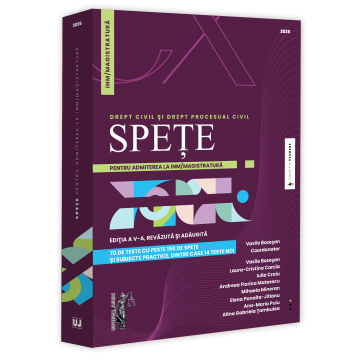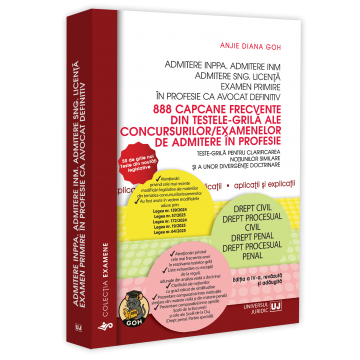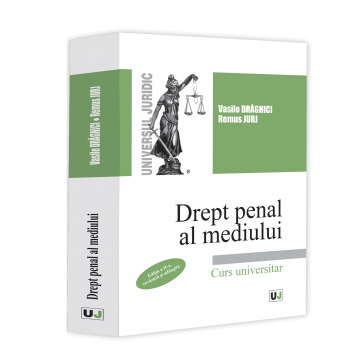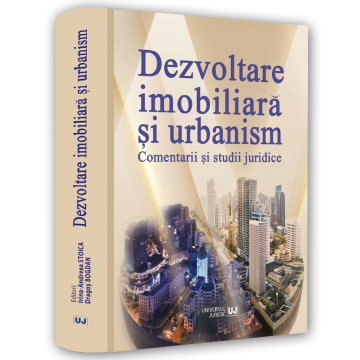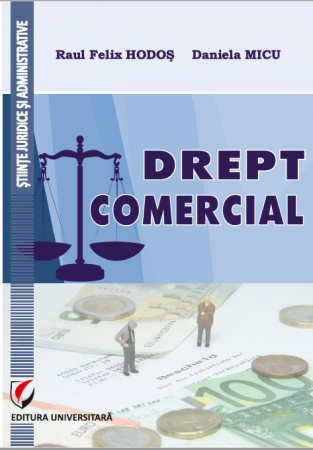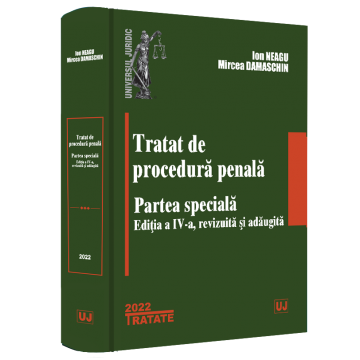ISBN: 978-606-591-402-5
DOI: 10.5682/9786065914025
Publisher year: 2013
Edition: I
Pages: 492
Publisher: Editura Universitară
Author: Schütze Robert
- Description
- Download (1)
- Authors
- Content
- More details
- Reviews (0)
If years ago, it was impossible to discuss about constitutional law of the European Union, as it was, for some authors, a term exclusively reserved for nation-states, today we are increasingly clear that we are dealing with a new federal building, within which Member States ranks federated entities and the Charter of Fundamental Rights of the European Union and the present treaties in force, together with the principles embodied in it (democracy and rule of law, the principle of separation of powers, equality of States before the Treaties, the principle of direct effect and supremacy of EU law over national laws) forms all together constitutionality of the block. The constitutionalization of the Union was one long, perfect being with each change or revising the constituent treaties, even though a few times peoples of the Member States rejected the idea of a European Constitution as illegitimate and nature undermine state sovereignty, both in expression of its internal and external.
This paper is part of the bold and original approaches on constitutional law of the European Union, providing a synthesis problem thoroughly documented, and a critical analysis of significant issues such as that of the European Union or character on the principle horizontal separation of powers between the EU institutions, the principle of direct effect, the principle of primacy of EU law etc.
The twelve chapters of this volume are divided into three sections - the first dedicated to the presentation of historical and EU institutions, the two principles that address the three branches of government business in the EU (and in this case will constitutionalist approach pronounced), and the third part which shows the principles of Union law (direct effect, the indirect effect, primacy, priority, ways of law, liability for breach of EU law, the status of fundamental rights in the Union).
The work is distinguished by original presentation, accompanied by a selection of the author's personal history of fundamental parts of the Union or of the Court of Justice of the European Union. Exposure is always accompanied by suggestive examples designed to ease understanding of matter.
Consequently, the work can be recommended to those that are initiated in the field of EU law, and those seeking to deepen constitutional aspects of EU law institutions.
Volume publication was supported and recommended by the Centre for European Legal Studies Institute of Legal Research of the Romanian Academy.
Work recommended by:
Centre for European Legal Studies (CSDE) Legal Research Institute of the Romanian Academy
Romanian Law Association and European Affairs (ARDAE)
Judges Forum in Romania
Center for Constitutional Law and Political Institutions (CDCIP) from the Faculty of Law - University of Bucharest
Society of Legal Sciences
-
Dreptul constitutional al Uniunii Europene
Download
He is a law professor at the University of Durham, United Kingdom, with extensive professional experience. He studied German and English law and defended a doctoral thesis at the European University Institute in Florence.
The thesis was awarded, and its publication in volume at Oxford University Press (From Dual to Cooperative Federalism. The Changing Structure of European Law, 2009) attracted favorable reviews and once again its award.
Content
Summary / IX
Contents / XI
List of illustrations / XVIII
List of tables / XIX
Foreword / XXI
Preface / XXIII
Thanks / XXV
List of cases / XXVII
Correspondence table / XXXVIII
Abbreviations / LVII
Introduction: The constitutional law of the European Union / 1
Part I. History and structure / 7
1. Constitutional history: from Paris to Lisbon / 9
Introduction / 9
From Paris to Rome: The European Coal and Steel Community / 11
(Supranational) structure of the ECSC / 13
European Defense Community (a failure) / 16
From Rome to Maastricht: The European Economic Community / 18
Normative supranationalism: the nature of European law / 19
Decisional supranationalism: the political structure / 20
Intergovernmental developments outside the EEC / 23
The supranational intergovernmental reforms implemented by the Single European Act / 26
From Maastricht to Nice: (old) European Union / 27
The structure of the temple: the three pillars of the Union (from Maastricht) / 28
First pillar: European Communities / 29
The second pillar: the common foreign and security policy / 31
The third pillar: justice and home affairs / 32
A decade of "constitutional DIY": Amsterdam and Nice / 32
Treaty of Amsterdam: the division of the third pillar / 33
The Treaty of Nice: a limited institutional reform / 35
From Nice to Lisbon: (new) European Union / 36
Constitutional treaty (failed): a formal "total revision" / 38
The Lisbon Treaty: a "material overhaul" / 40
Conclusions / 44
Constitutional character: a federation of states / 46
Introduction / 46
American constitutional tradition: federalism as (inter) national law / 48
European constitutional tradition: national law versus international law / 52
Conceptual polarization: “confederation” versus “federation” / 53
Early criticism: European tradition and the federal genre (missing) / 55
The European Union in the light of the American constitutional tradition / 58
The dimension of substantiation: the European “constitutional treaty” / 59
The functional dimension: the distribution of powers in the European Union / 63
General classification: European Union on the federal "middle ground". / 64
The European Union in the light of the European constitutional tradition / 65
The "theory" sui generis: an "incomparable" European Union / 65
Theory of international law: the "Maastricht decision" / 67
The revelation of the European statist tradition: three constitutional oppositions / 70
Trip: Is the democratic "deficit" of the European Union a false problem? / 73
Conclusions / 76
Political structure: Union institutions / 79
Introduction / 79
The principle of "separation of powers" and the European Union / 81
European Parliament / 85
Formation: election of Parliament / 86
The size and composition of the Parliament / 87
Members of the European Parliament and political parties / 89
Internal structure: parliamentary bodies / 92
Plenary: the decision - making process and the vote / 93
Parliamentary functions / 95
Legislative functions / 95
Budgetary functions / 96
Control functions / 97
Elective functions / 98
European Council / 99
President of the European Council / 101
European Council: functions and powers / 102
Council / 103
Council: component and formations / 104
Internal structure and organs / 105
Presidency of the Council / 105
"Coreper" and the specialized committees / 106
Trip: High Representative for Foreign Affairs and Security Policy / 109
Decision and voting procedure / 110
Functions and competencies / 113
Political structure: Union institutions II / 115
Commission / 115
Component and structure / 116
The president and his “college” / 117
Administrative bodies of the Commission / 118
Commission decision - making process / 119
Functions and competencies of the Commission / 122
Travel: European agencies and Commission / 124
Court of Justice of the European Union / 12
Judicial architecture: the judicial system of the Union / 127
Court of Justice: component and structure / 128
Tribunal: component and structure / 130
Excursion: Advocates General / 131
"Specialized courts": the Civil Service Tribunal / 132
Judicial procedure (s) / 133
Judicial argumentation: methods of interpretation / 135
Jurisdiction and jurisdictional competences / 136
European Central Bank / 138
Special Statute of the ECB / 138
Bodies and administrative structure / 140
Internal divisions and the decision process / 142
Functions and competencies / 143
Court of Accounts / 144
Conclusions / 146
Part II. Powers and procedures / 149
Legislative powers: competences and procedures / 151
Introduction / 151
Area of competence of the Union / 152
Teleological interpretation / 154
General competences of the Union / 156
Harmonization competence: art. 114 TFEU / 157
Residual competence: art. 352 TFEU / 159
Categories of Union competence / 162
Exclusive competence: art. 3 TFEU / 164
Shared competences: art. 4 TFEU / 165
Coordination skills: art. 5 TFEU / 166
Complementary competence: art. 6 TFEU / 167
procedulegislative measures: ordinary and special / 168
"Ordinary" legislative procedure / 170
Constitutional theory: the formal text / 170
Constitutional practice: informal tripartite meetings ["trialogues"] / 173
"Special" legislative procedures / 175
The principle of subsidiarity / 176
Procedural standard: subsidiarity as a political guarantee of federalism / 177
Material standard: subsidiarity as a jurisdictional guarantee
of federalism / 180
Conclusion / 183
External powers: competences and procedures / 187
Introduction / 187
External competences of the Union / 190
Common foreign and security policy / 192
Special external powers of the Union / 192
Residual competence from the treaty: art. 216 TFEU / 195
The relationship between the CFSP and special external competences / 197
The nature of external competences / 199
Nature sui generis to the competent CFSP / 200
Article 3 para. (2) TFEU: subsequent exclusive treaty powers / 201
Three directions of exclusivity: codification of constitutional practice? / 201
Subsequent exclusivity: criticizing the constitutional theory / 203
Procedures for adopting decisions in the external field / 204
"Specificity" of CFSP / 205 decision-making procedures
Institutional actors and institutional balance / 205
Ways of voting in the Council / 206
Procedure (ordinary a) of the Union for the conclusion of treaties / 207
Initiation and negotiation / 208
Signing and concluding / 209
Modification, suspension (and termination) / 211
The succession of the Union in the international agreements of the Member States / 211
Sharing external power: constitutional guarantees of unitary character / 212
Joint agreements: an international and political guarantee / 213
Obligation to cooperate: internal and jurisdictional guarantee / 215
Member States as "representatives of the Union" / 216
"Overturned" subsidiarity: restrictions on the exercise of shared state competence / 218
Conclusions / 220
Executive powers: competences and procedures / 222
Introduction / 222
Government attributions: the dual executive of the Union / 224
Legal instruments for political leadership / 225
Informal governance procedure (s) / 226
Legislative attributions: delegated acts and implementing acts / 228
Delegation of "legislative" power: art. 290 TFEU / 230
Jurisdictional guarantees: constitutional limits for delegated acts / 231
Political guarantees: control rights of the Union legislator / 234
"Attribution" of the executive power: art. 291 TFEU / 236
The field of art. 291 TFEU / 237
Constitutional guarantees for implementing legislation / 239
Administrative attributions I: centralized execution / 242
The scope of the administrative powers of the Union / 242
Administrative attributions and the principle of subsidiarity / 246
Administrative tasks II: decentralized execution / 249
The effects of national administrative acts / 249
National administrative autonomy and its limits / 251
Conclusions / 254
Judicial powers: competences and procedures / 256
Introduction / 256
Cancellation attributions: jurisdictional control / 260
Existence of an "attackable" act / 261
Legitimate reasons for control / 263
"Formal" and "material" reasons / 263
In particular: the principle of proportionality / 265
Active procedural capacity before the European Court of Justice / 266
The formulation from Rome and its jurisdictional interpretation / 268
The Lisbon formulation and its problems of interpretation / 271
Indirect control of European law / 273
Collateral control: the exception of illegality / 273
Indirect control by preliminary references / 274
Reparatory attributions: liability actions / 276
Procedural conditions: from ancillary action to independent action / 277
Material conditions: from Schöppenstedt to Bergaderm / 278
Judicial attributions I: enforcement actions / 280
Enforcement actions against Member States / 281
Procedural conditions pursuant to art. 258 TFEU / 281
Judicial execution by financial sanctions / 283
Enforcement actions against the Union: abstention from decisions / 285
Judicial attributions II: preliminary decisions / 287
First paragraph: jurisdiction of the European Court of Justice / 289
Second paragraph: conditions for a preliminary ruling / 290
"Who": national courts / 291
"What": necessary questions / 293
The third paragraph: the obligation to notify and “clear acts” / “clear act” / 294
Legal nature of preliminary rulings / 297
Conclusions / 299
Part III. Rights and procedural means / 301
European law: direct effect and indirect effect / 303
Introduction / 303
Constitutional law: the effect of European primary law / 308
Direct effect: from a strict test to an indulgent one / 310
Direct effect dimensions: vertical and horizontal direct effect / 312
Direct law of the Union: regulations and decisions / 314
Regulations: the "legislative" instrument / 314
General application in all Member States / 315
Direct application and direct effect / 316
decideile: the executive instrument / 318
Specifically addressed decisions / 318
Decisions without explicit addressee / 320
Indirect Union law: directives / 320
Direct effect and directives: conditions and limits / 321
Rule for excluding the direct horizontal effect / 323
Limitation from the rule: broad definition of state (actions) / 325
Exception to the rule: incident horizontal direct effect / 326
Indirect effects by European (primary) law and by national law / 328
The doctrine of the conforming interpretation of the national law / 328
Indirect effects through European law / 331
Union external law: international agreements / 335 /
Direct effects of the Union agreements / 335
Conditions of direct effect / 336
Dimensions of the direct effect / 338
Indirect effects: interpretation and application of principles / 339
Conclusions / 341
European law: supremacy and priority / 344
Introduction / 344
The European perspective: absolute supremacy / 345
The absolute domain of the principle of supremacy / 347
Supremacy over the internal laws of the Member States / 347
Supremacy over the international treaties of the member states / 349
The "executive" nature of supremacy: non-application, not invalidation / 351
National perspective: relative supremacy / 354
Limits of fundamental rights: jurisprudence "so long" / 355
Limits of competences: from "Maastricht" to "Mangold" / 357
Legislative priority: nature and effect / 360
Priority categories: relative effects of priority / 360
Domain priority / 361
Obstacle priority / 362
Priority of the norm / 363
Modes of priority: explicit priority and implicit priority / 363
Constitutional limits of the legislative priority / 365
Union instruments and their ability to prioritize / 365
Priority capacity of regulations / 365
Priority capacity of directives / 367
Priority capacity of international agreements / 368
Priority limits from the competence perspective / 370
Minimum harmonization powers / 371
Complementary competences excluding harmonization / 372
Conclusions / 374
European law: procedural avenues and responsibilities / 376
Introduction / 376
Principle of interpretation (compliant) / 379
The principle of equivalence / 380
Non-discrimination: extending national procedural avenues to European actions 380 (b) 'Similar' actions: the test of equivalence / 381
The principle of effectiveness / 383
Historical evolution of the effectiveness standard / 384
Procedural limits of the possibility to invoke European law / 389
The principle of responsibility / 392
State responsibility: the "Francovich" doctrine / 393
The three conditions for state responsibility / 395
State liability for judicial infringements of European law / 398
Private liability: the Courage doctrine / 401
Conclusions / 404
In particular: human rights in the Union / 406
Introduction / 406
The "unwritten" catalog of rights: human rights as "general principles" / 408
The birth of European fundamental rights / 409
European standard - "autonomous" standard / 411
Limitations and "limitations to limitations" / 414
United Nations law: external limits to rights
European human rights? / 416
The "written" catalog of rights: Charter of Fundamental Rights / 419
Charter: structure and content / 420
Rights (hard) and principles (flexible) / 422
Limitations and "limitations to limitations" / 423
Relations with the European Treaties (and with the European Convention) / 424
The "external" catalog of rights: the European Convention for the Protection of Human Rights and Fundamental Freedoms / 426
Standard of the Convention for acts of the Union / 427
Prior to accession: incidental (indirect) control of Union acts / 428
Subsequent to accession: direct (complete) control of Union acts / 430
Union accession to the European Convention: preconditions / 431
"Doctrine of incorporation": European rights and national law / 432
Incorporation and general principles: execution and derogation / 433
Incorporation and Charter of Fundamental Rights / 436
General rules for all Member States / 436
Special rules for Poland and the United Kingdom / 438
Incorporation and the European Convention for the Protection of Human Rights and
of fundamental freedoms? / 440
Excursion: incorporation and particularization - human rights and private actions / 441
Conclusions / 442
Annexes / 445
European Treaties (chronology) / 446
Territorial evolution of the European Union / 448
Excerpts from the "Luxembourg Compromise" / 451
Relations between the Commission and the Council / 453
Voting procedure by majority / 453
Excerpts from James Madison - “Federalist no. 39 ”/ 455
Excerpts from the "Act for the direct election of the European Parliament" of 1976/458
Extracts from Decision 2009/908 on the Presidency of the Council / 462
Directorate-General for Internal Affairs (organization chart) / 464
Excerpts from the "Comitology Regulation" / 465
Index / 471
The European Union has existed for over half a century. Starting in 1952 as the "Europe of the Six" in a given industrial sector, today's Union has twenty-seven member states and operates in almost every area of social life. The constitutional structures of the Union have evolved in parallel with this dynamic growth. Born as an international organization, the Union has evolved into a mature federation of states. As a result, the European Union underwent its greatest "transformation" in the first decade of the 21st century. This fundamental reform began in 2001 with the Laeken Declaration on the Future of the European Union and found its purpose - despite the failure of the 2004 Treaty establishing a Constitution for Europe - in the Reform Treaty (Treaty of Lisbon) of 2007. Moreover, the Union after Lisbon is no longer the Union it was before. This book presents the structures and powers of this "renewed" Union in "renewed" constitutional terms. It is the fruit of my lessons and writings over the last decade - tumultuous. I would like to thank many colleagues and friends and especially Antonis Antoniadis, Amandine Garde, Konrad Lachmayer, as well as Dieter and Isolde Schütze. For the editorial part, special thanks to Sinéad Moloney of Cambridge University Press for his unlimited patience and professionalism. This book is dedicated to Pierre Pescatore - the greatest "painter" of the twentieth century in the European Union.

6359.png)
![Constitutional Law of the European Union [1] Constitutional Law of the European Union [1]](https://gomagcdn.ro/domains/editurauniversitara.ro/files/product/large/dreptul-constitutional-al-uniunii-europene-1549-303112.jpg)





